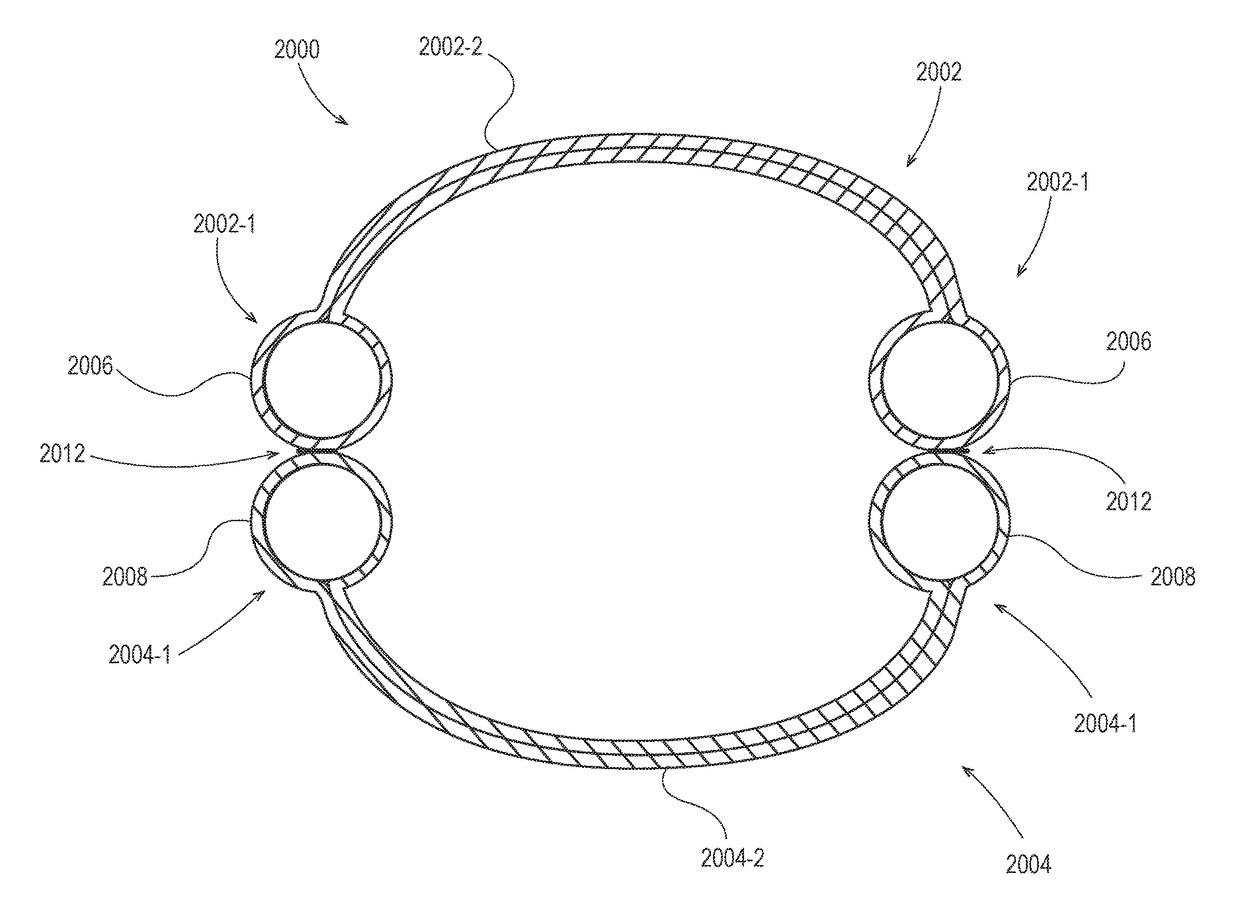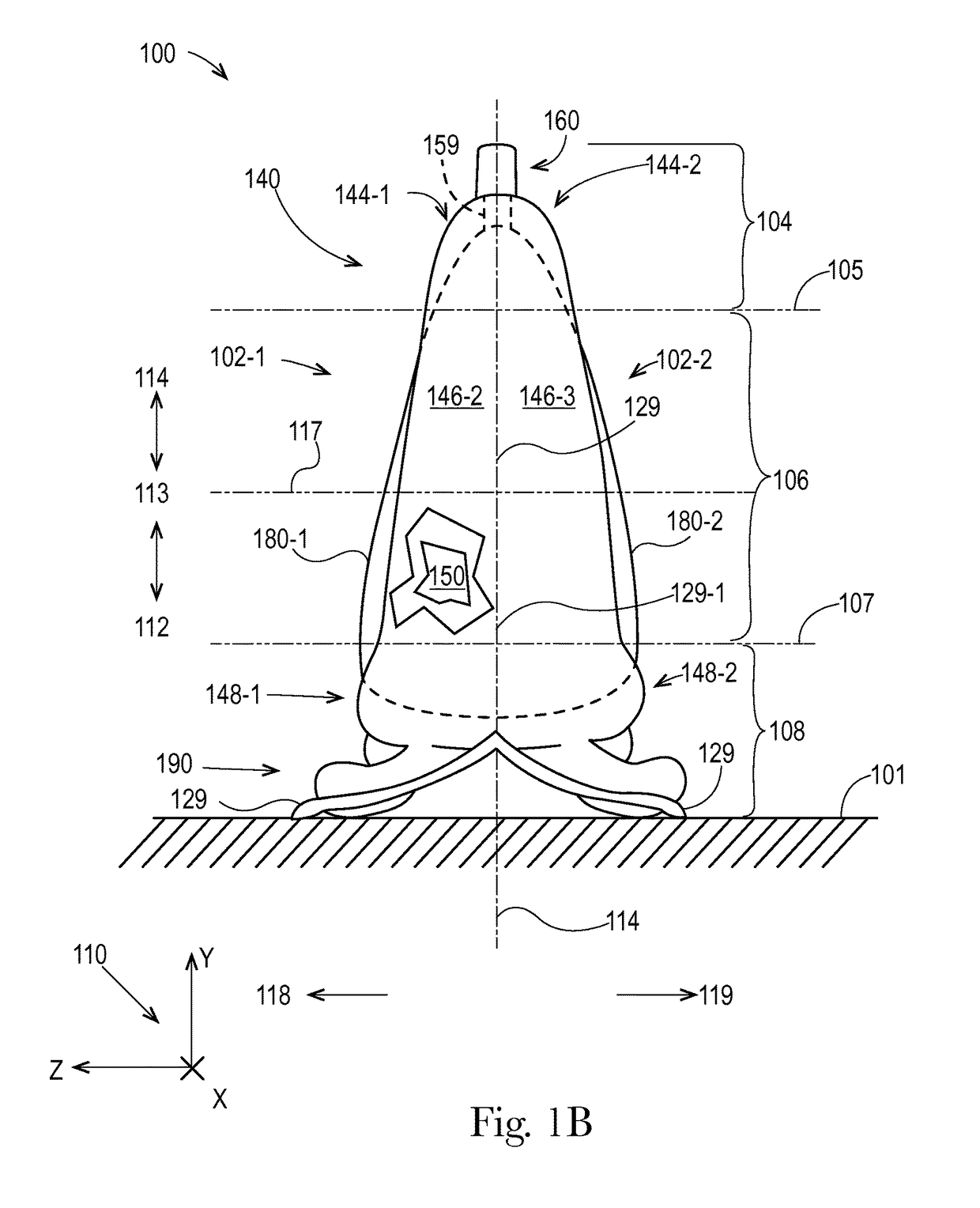Flexible containers having improved seam and methods of making the same
a flexible container and seam technology, applied in the field of containers, can solve the problems of high cost of conventional rigid containers for fluent products, energy-intensive processes in both kinds of making, and difficult decoration of containers, etc., and achieve the effects of less material consumption, less cost of making, and less material consumption
- Summary
- Abstract
- Description
- Claims
- Application Information
AI Technical Summary
Benefits of technology
Problems solved by technology
Method used
Image
Examples
Embodiment Construction
[0076]The present disclosure describes various embodiments of containers made from flexible material. Because these containers are made from flexible material, these containers can be less expensive to make, can use less material, and can be easier to decorate, when compared with conventional rigid containers. First, these containers can be less expensive to make, because the conversion of flexible materials (from sheet form to finished goods) generally requires less energy and complexity, than formation of rigid materials (from bulk form to finished goods). Second, these containers can use less material, because they are configured with novel support structures that do not require the use of the thick solid walls used in conventional rigid containers. Third, these flexible containers can be easier to decorate, because their flexible materials can be easily printed before they are formed into containers. Fourth, these flexible containers can be less prone to scuffing, denting, and r...
PUM
| Property | Measurement | Unit |
|---|---|---|
| width | aaaaa | aaaaa |
| temperature | aaaaa | aaaaa |
| area | aaaaa | aaaaa |
Abstract
Description
Claims
Application Information
 Login to View More
Login to View More - R&D
- Intellectual Property
- Life Sciences
- Materials
- Tech Scout
- Unparalleled Data Quality
- Higher Quality Content
- 60% Fewer Hallucinations
Browse by: Latest US Patents, China's latest patents, Technical Efficacy Thesaurus, Application Domain, Technology Topic, Popular Technical Reports.
© 2025 PatSnap. All rights reserved.Legal|Privacy policy|Modern Slavery Act Transparency Statement|Sitemap|About US| Contact US: help@patsnap.com



